Laundry Center: Why won't my laundry center washer fill?
Lack of water supply, a failed lid switch or lid lock switch, bad water level pressure switch, failed control or lack of washer electrical power can prevent the washer on a laundry center from filling. Check the water supply first. Make sure that your water supply faucets behind the washer are fully open.
If the water supply is okay, then a failed water valve can prevent the washer from filling. To check both hot and cold water valves, cycle through the water temperature settings and see if the washer fills using all of the different temperature settings. If the washer fills on the hot setting and not the cold, then you'll likely need to replace a faulty cold water valve. If the washer only fills on the cold setting, then you'll likely need to replace a bad hot water valve.
The fill valves buzz faintly when they're getting electric current from the timer or electronic control board. If you don't hear a buzz indicating that the water valve assembly is getting power during the fill portion of the cycle, check the lid switch. Many laundry center washers won't fill with water if the lid switch doesn't detect that the lid is closed. To check the lid switch, unplug the laundry center and check continuity through the lid switch with the washer lid closed. Replace the lid switch if you don't measure continuity through the switch with the washer lid closed.
If the lid switch is okay, then a bad water level pressure switch may be preventing the inlet water valves from getting power. The water level pressure switch won't send current to the fill valves if a stuck contact in the water level pressure switch errantly detects that the washer is already full of water when it's actually empty. Using the wiring diagram for reference, check for continuity through the water level pressure switch contact that sends current to the fill valves when the washer tub is empty and replace the water level pressure switch if it isn't allowing current to flow to the water valve assembly. You can typically find the wiring diagram in the laundry center's console (also known as the control panel) or as a page of the parts list diagram.
If the water level pressure switch is okay, then a bad control timer or electronic control board may be preventing the inlet water valve from getting power.
For laundry centers that use a timer, check continuity through the timer using the wiring diagram as a guide. Replace the timer if it isn't allowing current to flow to the inlet water valve assembly.
A laundry center washer that uses an electronic control board often has a self-diagnostic feature so the control will signal an error code when the washer doesn't fill. If the control signals an error code, look it up on our error code charts and troubleshoot the cause. The washer will likely fill with water again after you find and fix the cause of the error code.
For some Frigidaire and Kenmore 417-series laundry centers with electric dryers and timer controls, if the washer is completely dead and the dryer runs but doesn't heat, then a tripped circuit breaker might be preventing the washer from getting power. Check the wiring diagram for your laundry center to see if the L2 leg of current supplies power to the dryer motor through the timer. In this type of laundry center, the washer and one side of the heating element are powered by the L1 leg of 240-volt power while the dryer motor and the other side of the heating element are powered by the L2 leg of 240-volt power. Reset the house circuit breakers for the laundry center to restore the L1 leg of 240-volt power. If the washer doesn't get power and the dryer doesn't heat after resetting the house circuit breakers, then the laundry center's electrical outlet may be bad. Have an electrician check the outlet and repair it if it's not supplying the laundry center with 240-volt power.

THESE REPAIRS MAY HELP SOLVE YOUR LAUNDRY CENTER PROBLEM

Replace the laundry center lid lock assembly
The lid lock assembly is a safety device that senses if the washer lid is shut and locks the lid shut during the spin cycle. The lid lock switch shuts off the washer motor if the lid is lifted during agitation. If the lid lock fails to detect that the lid is shut or fails to lock the lid during the spin cycle, replace the lid lock assembly.
Laundry center lid lock assembly

How to replace a laundry center washer lid lock switch
If your laundry center washer fills with water but won't agitate, the lid lock switch could be to blame. This repair guide and video show how to replace a laundry center lid lock switch in just 15 minutes.

Replace the laundry center washer timer
The washer timer controls the washer components. Also called a cycle selector, the timer has a motor that advances the internal cams inside the timer body. The cams open and close electrical contacts to energize and de-energize components during the wash cycle. A control knob on the stem of the timer lets you select cycles on the timer. If the timer motor doesn-t advance or the contacts are defective in the timer, replace the timer.
Laundry center washer timer
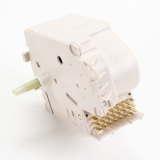
How to replace a laundry center washer timer
If your laundry center washer won't advance through the fill, wash, drain or spin cycles, the washer timer could be the problem. This repair guide and video show how to replace a laundry center washer timer in 6-quick steps.
Most common symptoms to help you fix your laundry centers
Choose a symptom to see related laundry center repairs.
Main causes: clogged drain system, blocked drain hose, bad drain pump…
Main causes: broken dryer drive belt, weak drive motor, binding drum seals…
Main causes: door not fully shut, bad door switch, faulty push-to-start switch, wiring failure, bad drive motor, blown f…
Main causes: bad lid switch or lid lock, drive motor failure, broken motor coupler, bad timer, faulty electronic control…
Main causes: broken lid switch or lid lock, faulty drive motor, drain system problem, broken drive system components…
Main causes: blocked exhaust vent, clogged lint screen, bad timer, moisture sensing problems, weak gas valve coils, bad …
Main causes: unbalanced load, broken suspension springs or shocks, worn snubber ring…
Main causes: lack of water supply, failed lid switch or lid lock, bad water level pressure switch, control system failur…
Main causes: control system failure, broken heating element, bad gas valve coils, gas supply failure, voltage supply pro…
Most common repair guides to help fix your laundry centers
These step-by-step repair guides will help you safely fix what’s broken on your laundry center.
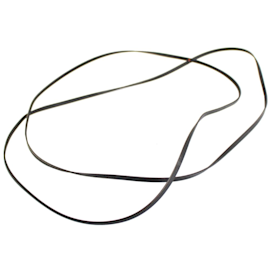
How to replace a laundry center dryer drive belt
If the dryer motor runs but the drum doesn’t turn, the drive belt is likely broken. Replace it, following the steps in t…
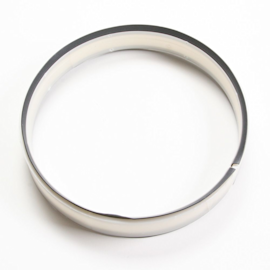
How to replace a laundry center washer snubber ring
If the washer tub bangs the cabinet during the spin cycle even though the load is balanced, you might need to replace th…
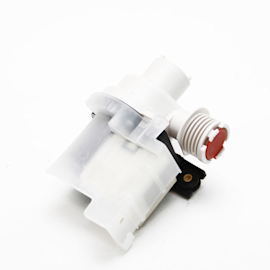
How to replace a laundry center washer drain pump
If the washer won’t drain because the drain pump failed, follow the steps in this repair guide to replace it.…
Effective articles & videos to help repair your laundry centers
Use the advice and tips in these articles and videos to get the most out of your laundry center.

Learn about all the convenient features on our Sears PartsDirect website that make your parts purchases easier.…

Get answers to frequently asked questions about Sears and Sears PartsDirect.…
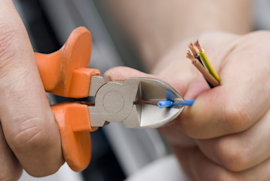
Learn how to repair broken, frayed or damaged wires in your appliances.…
